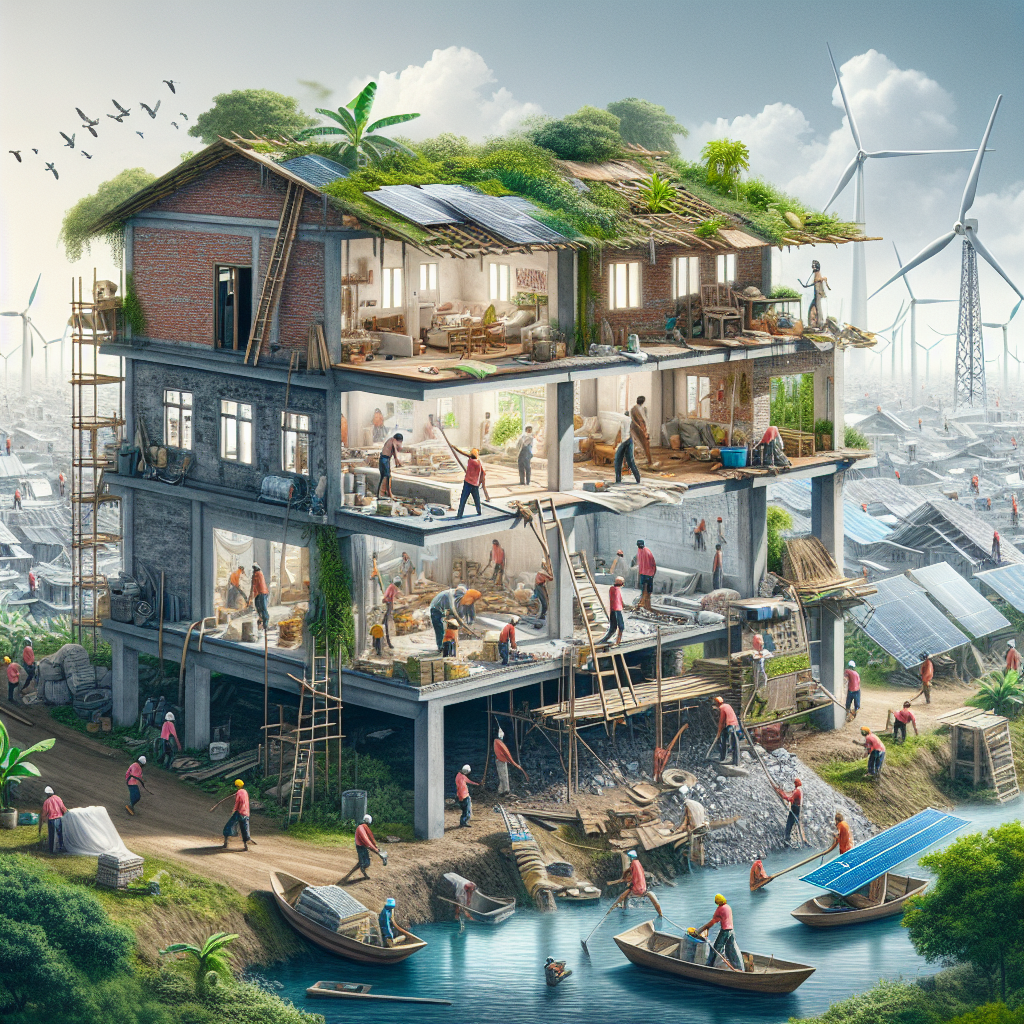Sustainable construction has emerged as a pivotal approach to development in the 21st century, addressing the dual challenges of global construction demands and environmental conservation. Developing countries, with their rapid urbanization and growth, stand at a critical juncture where the adoption of sustainable construction methods can lead to a paradigm shift in their developmental trajectory. This approach not only offers a pathway to environmentally responsible growth but also presents a plethora of opportunities along with its share of obstacles.
Opportunities in Sustainable Construction
Economic Growth and Job Creation
Sustainable construction practices open up new avenues for economic growth in developing countries. By adopting green building technologies, these nations can attract foreign investment, encouraging a flow of capital that supports local industries related to sustainable materials and construction techniques. Additionally, the shift towards sustainable construction demands a skilled workforce, from architects and engineers to construction workers knowledgeable in green technologies, thus creating numerous job opportunities.
Environmental Preservation
Developing countries are often the most vulnerable to the effects of climate change, making sustainable construction an imperative rather than a choice. By embracing sustainable construction, these countries can significantly reduce their carbon footprint, ensuring better air quality and preserving natural resources. Techniques like rainwater harvesting, solar energy utilization, and the use of locally-sourced, sustainable building materials help in minimizing environmental degradation.
Health and Well-being
Sustainable buildings focus not only on environmental aspects but also on the health and well-being of the occupants. Features like improved natural lighting, better air quality, and the use of non-toxic materials contribute to a healthier living environment. For developing countries, this means an opportunity to improve public health outcomes, reduce healthcare costs, and enhance the quality of life for their populations.
Resilience and Adaptability
Climate change poses a significant risk to infrastructure, particularly in developing nations. Sustainable construction offers solutions that make buildings more resilient to extreme weather conditions, such as floods, hurricanes, and earthquakes. By incorporating features like elevated structures, stormwater management systems, and flexible design principles, sustainable buildings can withstand environmental stresses, ensuring the safety and security of the population.
Obstacles to Sustainable Construction
High Initial Costs
One of the primary obstacles to the adoption of sustainable construction in developing countries is the perceived high initial investment. Green technologies and materials can be costlier upfront compared to conventional alternatives. However, this perspective often overlooks the long-term savings through reduced energy consumption, lower maintenance costs, and the lifespan extension of the building.
Lack of Awareness and Expertise
There is a significant gap in awareness and technical expertise regarding sustainable construction practices in many developing countries. This gap extends from policymakers and industry professionals to the general public. Without adequate knowledge and skills, transitioning to sustainable construction can be slow and fraught with challenges.
Regulatory and Policy Barriers
Developing countries often lack the regulatory framework and policies to support sustainable construction. Without incentives or mandates from the government, stakeholders in the construction industry may be reluctant to adopt green practices. The absence of standardized codes and certifications for sustainable buildings further complicates the scenario, making it difficult to assess and validate sustainable practices.
Cultural and Social Barriers
Cultural preferences and social norms can also pose significant barriers to sustainable construction. In many developing countries, there is a strong inclination towards traditional construction methods and materials. Convincing stakeholders to shift towards modern, sustainable alternatives requires overcoming deeply ingrained beliefs and preferences.
FAQs
Q1: What is sustainable construction?
A1: Sustainable construction refers to the practice of creating and managing buildings in an environmentally responsible and resource-efficient manner throughout a building’s life-cycle, from siting to design, construction, operation, maintenance, renovation, and demolition.
Q2: Why is sustainable construction important for developing countries?
A2: Sustainable construction is crucial for developing countries as it offers a pathway to economic growth, environmental preservation, improved public health, and resilience against climate change, all of which are critical for long-term sustainable development.
Q3: Can sustainable construction be affordable for developing countries?
A3: Yes, while sustainable construction may involve higher initial costs, the long-term savings through reduced energy and water usage, along with lower maintenance costs, make it a cost-effective option. Moreover, innovations in green technology are gradually reducing the upfront costs, making sustainable construction increasingly affordable.
Q4: How can developing countries overcome the obstacles to sustainable construction?
A4: Developing countries can overcome obstacles through government incentives, public and private investment in green technologies, education and training programs to build expertise, and the development of policies and regulatory frameworks that support sustainable construction.
Q5: Are there successful examples of sustainable construction in developing countries?
A5: Yes, there are numerous success stories of sustainable construction in developing countries. Examples include the use of bamboo as a sustainable building material in Asia and Africa, solar-powered homes in India, and green buildings in Brazil that utilize rainwater harvesting and natural ventilation systems.
Sustainable construction presents a compelling opportunity for developing countries to pave the way for a greener, more resilient future. While the path is laden with challenges, the benefits of adopting sustainable practices far outweigh the obstacles. With concerted efforts from governments, the private sector, and communities, sustainable construction can drive the transformation towards sustainable development in the Global South.

